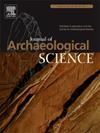How global is archaeological science?
IF 2.5
1区 地球科学
Q1 ANTHROPOLOGY
引用次数: 0
Abstract
As the leading international journal for archaeological science, JAS not only serves as an indicator for the global state of archaeological science, but also carries a particular responsibility for the health of the field. Here, I trace the growth of archaeological science on a global scale both diachronically and geographically, offering what is a strongly positive trend of increasing research output in general, but also a markedly skewed picture of current participation in archaeological science research geographically. While the strength and distribution of archaeological science across Europe continue to increase from an already high base, and China is rapidly increasing its participation, both the UK and the US are falling behind – at least proportionately. This, however, is all par for the course and can be considered a simple re-arrangement among the wealthiest countries. The real story is in the near-absence of authors from precisely those countries whose archaeological heritage supplies much of archaeological science research: the Middle East, Africa, Latin America, Central Asia, South and Southeast Asia. Here, JAS, like all other journals, faces a dark reality that requires concerted efforts to change, by not only increasing access to science-based facilities and instruments, but crucially by increasing active in-country participation in archaeological science research, co-shaping agendas for the future of our discipline.
考古科学有多全球化?
作为国际领先的考古科学期刊,JAS不仅是全球考古科学状况的风向标,而且对该领域的健康发展负有特殊的责任。在这里,我追溯了考古科学在全球范围内的历时和地理上的发展,提供了总体上增加研究产出的强烈积极趋势,但也提供了目前在地理上参与考古科学研究的明显扭曲的画面。尽管考古科学在欧洲的实力和分布在已经很高的基础上继续增长,中国也在迅速增加参与,但英国和美国都落后了——至少在比例上落后了。然而,这一切都在意料之中,可以被视为最富裕国家之间的简单重新安排。真实的情况是,几乎没有来自这些国家的作者,这些国家的考古遗产提供了大量的考古科学研究:中东、非洲、拉丁美洲、中亚、南亚和东南亚。在这方面,与所有其他期刊一样,JAS面临着一个黑暗的现实,需要共同努力来改变,不仅要增加对科学设施和仪器的使用,更重要的是要增加国内对考古科学研究的积极参与,共同制定我们学科未来的议程。
本文章由计算机程序翻译,如有差异,请以英文原文为准。
求助全文
约1分钟内获得全文
求助全文
来源期刊

Journal of Archaeological Science
地学-地球科学综合
CiteScore
6.10
自引率
7.10%
发文量
112
审稿时长
49 days
期刊介绍:
The Journal of Archaeological Science is aimed at archaeologists and scientists with particular interests in advancing the development and application of scientific techniques and methodologies to all areas of archaeology. This established monthly journal publishes focus articles, original research papers and major review articles, of wide archaeological significance. The journal provides an international forum for archaeologists and scientists from widely different scientific backgrounds who share a common interest in developing and applying scientific methods to inform major debates through improving the quality and reliability of scientific information derived from archaeological research.
 求助内容:
求助内容: 应助结果提醒方式:
应助结果提醒方式:


